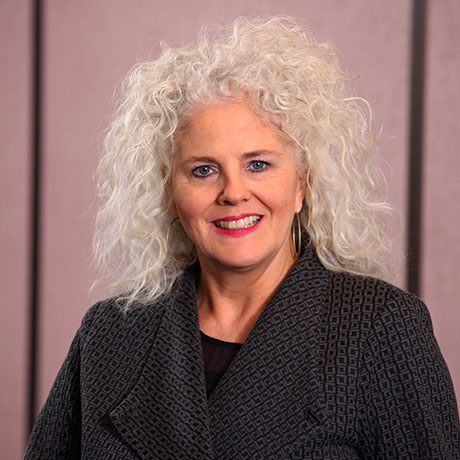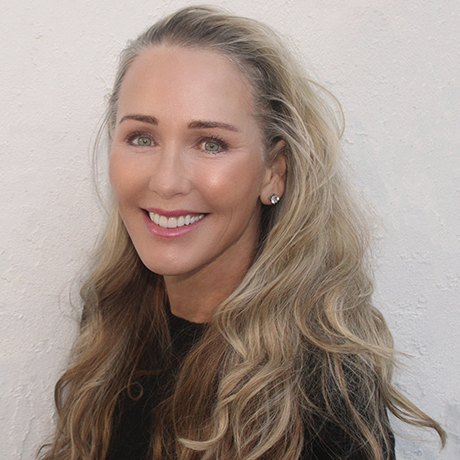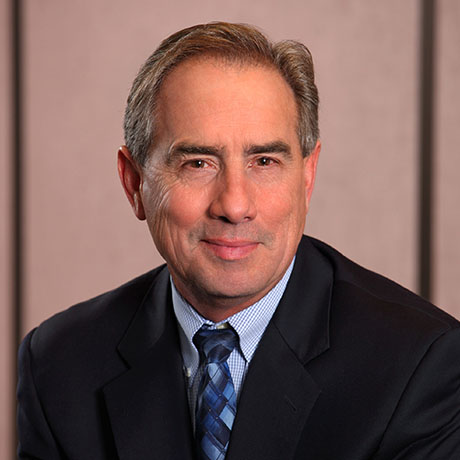Why Practices Don’t Sell
By Megan 

Your practice has successfully worked for you for many years so why isn’t it selling? It could be the transition consultant (broker) you are using, or it could be your practice.
Working with an experienced transition consultant is important. We know where and how to advertise. It doesn’t work to simply advertise on a website. You will want marketing and advertising in schools across the country, dental journals, and county/state societies. An experienced consultant already has a list of potential buyers for your area or type and may have other creative grassroots ideas to find the right buyer.
The right consultant cares about you, your team, practice, and goals. It shouldn’t be just about the commission money. Your consultant should be responsive and professional to potential buyers and you.
A comprehensive valuation and prospectus are important. If you or your consultant price your practice too high, it can be offensive to potential buyers, and they won’t feel comfortable offering a lower price. Even if you find a buyer willing to overpay for your practice, the bank will not finance 100%, which means you have to become a bank for a specific amount of the purchase price.
Sometimes even when you have the right consultant your practice may have other reasons for not selling. Sometimes it’s simply not finding the right dentist at the right time. Often it is because your location is not desirable to new buyers and their families. Sometimes it’s the size of the practice. We all know 3 op practices can be very efficient and profitable, but many buyers want 4 to 6 ops, especially to add more hygiene.
Declining collections the last 3 years or simply low collections can be a deterrent to potential buyers and banks unless you have a reason. They understand more time off due to vacation or health issues. Low new patient count, too many PPOs with low reimbursement, and low hygiene production can be concerning to buyers.
Most buyers understand they may need to update style or equipment and technology, but if it’s a lot of cost and effort, they may keep looking for a better practice.
If your practice falls into any of these areas of concern, it will take more time than the average to sell. Lowering the price may help, but if there is no interest, it’s not the price that’s the problem. Don’t give up or get mad, just understand that while your practice may have been perfect for you, it can be a while to find the right buyer.
Getting Your Practice Ready to Sell


You are ready! You woke up one morning early last week and said to yourself, “It’s Time!”
You have loved being a practicing dentist. But for a multitude of possible reasons, you are ready to sell. So, what’s next? You look around and think is my practice ready to sell? All of a sudden you see the chipped paint and remember the door that sticks if you don’t open it a certain way. Not unlike a house that you are putting on the market, some quick accounting of your practice is in order. Unlike a house, big and costly upgrades will not net you a higher sales price. So, let’s talk about what is a great bang for the buck and what may be money thrown out the window.
First, some really great things that don’t cost much. If your paint is chipped worn or aged… paint! Painting is simple, fast, and the quickest way to make a great first impression during the showings. Second, and advisably after the painting, upgrade flooring if it is worn or really outdated. For both of these options, go for smart clean colors. For the flooring options, keep it simple. Commercial carpet or carpet tiles and vinyl sheet or luxury vinyl plank (LVP) are quick to install and look great.
Second, fix all minor repairs. Doors that stick, duct tape on a hose, or worn fabric on chairs can be easily and inexpensively repaired and add to an overall feeling of a well-run business.
Third, declutter your entire office. It is time anyway. Put things you can’t part with boxes and get them out of the office. Otherwise, use your local goodwill and dumpster and let things go. Walk through the office as if you were going to buy this practice. You know that you would want to have clean, clutter-free spaces to visualize your future dental life in.
Even if you choose to postpone your sale, all the things I have just mentioned should be done if they are needed regardless, so it is a win-win! Your staff and patients will love everything mentioned and it is an inexpensive boost to the whole business.
Notice what I didn’t include? That’s right. I didn’t include any expensive dental equipment upgrades. Much to the dental supply company’s sadness, new dental chairs and a cone beam are not a good investment if you are planning to sell soon. Do not buy a new laser or a CAD CAM machine because big equipment purchases, with rare exceptions, do not pay for themselves when a sale is imminent.
Ok, you are all set. Now what? Well, give a practice broker a call in the meantime to start the valuation process. A side benefit is that we are happy to come out to your practice and let you know what we see as the best things you can do prior to listing. Be ready for the answer to be that nothing needs to be done. If you look around and think “it looks pretty good here”, chances are we will too.
My door is always open for consultations at any stage of your practicing life. I am always excited to help you navigate the pathway to your new life’s adventures.
Read MoreDental Seller Preparation Checklist
The best time to start preparing for your practice transition is three to five years from the date you plan on selling your practice. Since you may not really know that date, the best time to prepare is NOW! Here is a checklist of things you should do as you get closer to deciding to sell your practice:
___ Meet with your Financial Advisor – Discuss with your financial advisor that you are thinking of selling your practice. If the intention is to retire, let them know that is your plan. Ask them how much you may need to retire at the income level you desire.
___ Discuss Taxes with your Accountant – This is especially important in the current environment. There have been discussions at the government level to increase both capital gains and income tax rates significantly. Both affect the proceeds you will receive from the sale of your practice.
___ Obtain a Practice Valuation – It’s best to get a full valuation. You can provide this to your financial planner which will help determine when you will be able to retire if you get the desired amount from the sale of your practice. If you can’t yet retire now, most practice valuation companies or brokers will update the valuation for a minimal charge.
___ Keep your foot on the gas – Don’t slow down in your production. In fact, if possible, ramp up production to get the maximum value from your practice sale. Banks and buyers like practices that are trending up in production instead of going down.
___ Assess the condition of your practice – Do you have 20-year-old flooring that is faded, stained or torn. Replace it. Do you have mustard-colored countertops from 1970? Update the countertops. Paint will do wonders as well. Don’t spend a mint, but spend a reasonable amount – $10,000 to $20,000, to make the practice look and feel fresh and updated.
___ Clean up your Accounts Receivable – If you have credit balances on patient accounts, you’re required to send those back to the patient after a certain number of years. Each state has its own Unclaimed Property, or Escheatment law. You can find it on the internet. If you cannot find the patient, you are required to submit the balance to the state. Note that you can charge a nominal processing fee to the patient.
___ Self-assess your practice numbers – Is your staff payroll and benefits expense above 25% of your total collections? Is your production down, but you have the same staffing level? Is your dental supply fee over 7% of collections? Know what your ratios should be and manage to your numbers. Contact a consultant if you’re not sure what to do.
___ Know the market – Are practices in your area selling quick? Are interest rates super high? If it takes two or three years to sell a practice in your area, then you may want to list it soon rather than later.
___ Do a self-assessment – Think you’re five years away, but your back, neck or hands are telling you – SELL NOW! Burned out on managing staff and insurance companies? Just tired of living where you live and are ready for a change? All these may lead to selling sooner than your retirement date. Just because you sell your practice does not mean you have to retire. You can still practice either in yours or someone else’s practice. Or, maybe you’ve always wanted to do something different. Maybe it’s time to test the waters. You can always go back to being a dentist. I know several dentists who semi-retired and work as a dentist two days per week and drive Uber or LYFT two days per week for fun.
___ Contact a broker – Some of the best transitions we have done began several years before the sale occurred. We built relationships with the seller. In several cases, we found a buyer asking for a specific area. We made the call to one of the dentists we had a relationship with and they said “it’s time”. Brokers can also be advisors over the final two, three, or five years of your practice ownership. Should you buy the new CBCT? Should you hire an associate? We can help answer those questions.
Selling your practice is a major life event right up there with buying your first practice. Be sure and prepare, have a plan and get the right advisors. We’re always here for you and phone calls are always free. Give us a call – 877-866-6053.
Download your own checklist here: Seller Preparation Checklist
Read MoreWhat is My Practice Worth?


Have you ever said something like this? “In the 90’s I was producing over $1.5M. Five years ago I was producing $900,000. My practice must be worth at least $1.0M and this area has huge potential.” Value is not based on “long ago past” numbers nor “potential” numbers. Buyers don’t pay for what you did over 3 years ago nor potential. They have to put in the work for the “potential”, so they don’t pay you for that and most banks and appraisers look at the last 3 years.
First of all, production is not nearly as important as collections. In some offices, the two numbers might be pretty similar, but in many, there is a huge variance due to large insurance write-offs, any in-office discount plan, and uncollected production. Next, how much of your collections are you taking home?
Let’s talk about what your practice may be worth, potential action items, and who should assist you to value and sell your practice. It is one of the most important decisions in your life that impacts your income.
Gather your team of trusted advisors. Now is not the time to listen to friends and family that aren’t familiar with the dental industry and do not have many years of experience. You will want a reputable transition consultant (broker) and dental-specific CPA and attorney. Your transition consultant will have a list of dental-specific CPAs and attorneys that do much of the work in your area. The CPA will help you to maximize any retirement plan you have, reduce taxes, and pay off the debt in a way that makes sense for your specific situation. The attorney will ensure all sale agreements, non-compete, and re-do treatment is correct, as well as any work back or carry back documents.
To help with a simple and successful transition, ensure your financials or books are clean. Work with your CPA to ensure personal expenses are not being run through the practice. Know what your actual take-home is out of your collections. If collections are high but all expenses are high too, the value won’t be as high as you’d like.
Take a look at your AR and try to collect as much as possible and do any necessary write-offs. AR can be purchased by the buyer and the over 60 or 90 days old is not worth much unless you can show the patients are keeping up with monthly payment plans.
Most dentists don’t think they have many credit balances, but there are sometimes surprises here. Some credit balances may be correct and you need to do your due diligence to refund the money or better yet, finish treatment. Check that the credits are not an error. EOBs are difficult to read and an insurance adjustment may need to be modified or corrected. Credit balances are often adjusted directly off the purchase price.
So, how much is your practice worth? Your transition consultant will complete a full valuation and prospectus and then together you can set the price. If collections and/or income have been declining, that’s fine if you’re happy, just understand that buyers don’t pay for “old days numbers” and “potential”.
Read MoreThe Business Side of Dentistry – Theft and Embezzlement


Experts estimate that more than 40 percent of dentists are embezzled with an average loss of $50,000. But, because the embezzlers often steal small amounts of money over many years, the thief is never noticed. The US chamber of commerce estimated that 75 percent of employees steal from their workplace and that most do so repeatedly.
A majority of people, if given an opportunity, will take advantage of a situation to steal from their employer on the following frequency:
-3 percent will steal daily
-7 percent will steal weekly
-20 percent will steal 4-12 times a year
-70 percent will steal 1-2 times a year
-4 in 10 doctors experience theft in some form from the practice. 1 in 4 dental practices experience monetary theft from their practice.
The significant types of theft in dental practices are:
-Time
-Office supplies
-Dental supplies
-Goods and services in Kind
-Money
All types of theft can hurt the bottom line of the practice. The Monetary thief, in most cases, has the most negative effect on the practice bottom line. Most dentists find it hard to believe that their handpicked, trusted, longer-term staff would steal from the practice.
Here is an unfortunate, and real-life, example. A dentist had a highly successful practice with five employees. One was a long-term office manager who came to work early and left late every day. She managed all the financial transactions daily along with the insurance and statement billing. The office manager took an extended vacation. While she was gone, the office sent out statements and received numerous calls from patients that their statement was incorrect and that either their insurance had paid the bill, or they paid on the day of service by check or credit card. The doctor had the staff investigate all the disputes and found out that the office manager had embezzled more than one hundred thousand dollars over the years. He was devasted and could not believe that the long-term, most trusted employee had done this to him.
Methods that have been used by staff to steal from the practice:
- Zero Charge- Patient comes in for services, and the office staff member posts a zero-balance charge and pockets the money. At the end of the day, the computer collections balance to the deposit slip. No one notices.
- Falsify Deposit Slip– Employee brings the doctor a deposit slip to sign for the day matching all the collections taken in for the day but then takes out all the cash from the deposit bag or envelope and changes the deposit slip when depositing the money.
- Multiple Adjustments to Accounts- Courtesy discounts like cash discounts or senior discounts are used. Employee charges the full amount to the patients and keeps the cash discounts and pockets it.
- Fictitious Vendor- Employee sets up a fake business with an account and has doctor sign supply order checks for supplies. The employee deposits these checks into an account and keeps the money.
Internal Controls
Make sure that even your closest friend in the dental practice is being watched. Here are some suggested internal controls to help prevent thief and embezzlement:
- Segregation of Duties– Make sure one person does not control all cash flow processes.
- Daily Audit Trail– Review daily transactions to catch zero balance postings.
- Rotate Duties– This will help to reduce the chance for embezzlement.
- Verify the End-day Report to Deposit Slip– Ensure that you see the end-of-day report and it balances with cash deposits. The doctor should be responsible for depositing funds in the bank.
- Review Bank Statement– Take time to review the statements monthly.
- Require Vacations– All employees must take vacation days that they have earned.
- Performance Plans– If the practice meets specific goals and the practice is increasing its revenue, give incentives to employees in monetary form.
- Background Checks- Make sure you follow through on background checks before hiring new employees.
- Verify References- Check all references.
Having internal controls will help protect the practice and staff that are honest and want to do a good job. It will also help everyone stay focused on their tasks and goals at hand and take away the opportunity for someone to embezzle. You don’t want to have good employees turn into liabilities.
Omni Practice Group has been helping dentists for over 15 years developing plans for dentists to transition their practice. Our goal is to help you find the right buyer and make a smooth transition of your practice when the time is right. Contact us today for a free no-obligation consultation with one of our Practice Transition Advisors.
Read More